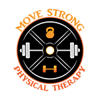Want to Avoid Injury When Working Out? Try This!
Injuries happen! If someone tells you they can prevent injuries, they aren’t telling the whole truth. They may be stating that they have ways to help reduce the incidence of injuries. There are many aspects of life that we cannot control and injuries are one of them
They happen and will always happen, but if we can reduce the prevalence of them from happening and find risk factors that may predispose someone to an increased risk for an injury, we are on the right track! Even though we can’t prevent injuries, we can put good work in on the front end to expedite the recovery process when injuries happen.
Why Injuries Occur
In order to learn how to prevent injuries, we must learn why they occur. Many injuries occur during the eccentric phase or during the deceleration phases of movements/exercises. If the body can’t control these movements via muscular control, soft tissue and bony/ligamentous structures are recruited to compensate and pick up the slack.
If you are constantly doing movements that are fast-paced and not controlling the eccentric portions, you are playing yourself at an increased risk for injury. By performing fast-paced movements all the time is just focusing on working on the “gas pedal” (concentric movements) when you need to work the “brakes” (eccentrics) as well.
How to Avoid Injury During Exercise:
Either macro or micro traumatic injuries can occur due to poor eccentric control. So what can we do to improve our body’s resiliency and not allow, focus on controlled eccentric movements? Start by incorporating eccentric work into your training!
Upper Body
Slow Eccentric Pull-Ups
Key Points:
Maintain a good trunk position/straight line from your ears to your toes.
Squeeze your shoulder blades into your back pockets on the pulling motion.
Control your shoulder blades protracting/upwardly rotating (separating) as you come down.
Slow Eccentric Push-Ups
Key Points:
Maintain a plank position and keep your body in a straight line.
Control the descent towards the floor, slow and controlled.
Allow your shoulder blades to retract/depress (come together) as you go towards the ground.
Allow your shoulder blades to protract (move apart) on the pressing portion.
Slow Eccentric Dumbbell Bench Press
Key Points:
Slow and controlled.
Don’t allow your body to rotate to the loaded side.
Lower Body
Bilateral Plantar Flexion to Single Leg Eccentrics
Key Points:
Slow and controlled.
Go up on both feet.
Shift your weight onto 1 leg. Control descent.
When your foot is parallel with the ground, slightly bend the knee and control going further down to the floor.
Slow Eccentric Goblet Squats
Key Points:
Control descent.
Perform ascent quickly but under control.
Maintain a good position of your lower body/don’t allow your knees to drift inside your feet.
Maintain a flat lower back position.
Slow Eccentric Single Leg Deadlifts
Key Points:
Control descent as well as control the ascent to the finish position of the lift.
Sit back into your stance leg hip and maintain a flat low back position.
Slow Eccentric Reverse Lunges
Key Points:
Control descent and control the ascent to the finish position of the lift.
Don’t allow the knee to go inside of the foot towards the midline.
Slow Eccentric Offset Reverse Lunges
Key Points:
Harder variation that bilateral loading.
Same points as Slow Eccentric Reverse Lunges.
Avoid letting the weight tip you to one side.
In Closing: How To Avoid Injury (TL;DR)
Learning to control your body is paramount for improving athletic performance as well as decreasing someone's risk for injury! Try adding more controlled eccentric work into your routine today!
Move Strong provides Physical Therapy in Central Massachusetts. Call or schedule an appointment online!



